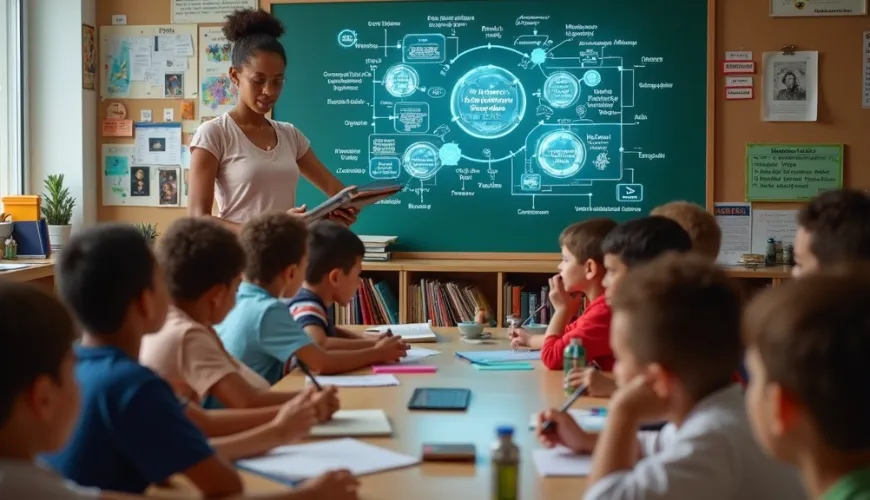Crafting Stories with AI: How to Find the Best AI Story Generator in 2025
In a world where creativity is both a personal passion and a professional asset, the ability to tell stories has never been more valuable. Whether you're spinning tales for entertainment, building immersive content for branding, or crafting lesson materials that keep students hooked, storytelling sits at the heart of connection. But what happens when creativity hits a wall? That's where AI story generators step in.
Powered by advanced language models like ChatGPT, Claude, and Mistral, these AI tools are changing the way we brainstorm, write, and refine narratives. In 2025, the best AI-powered story generators go far beyond text completion—they help writers imagine new worlds, develop characters, and even adapt their tone for different audiences. For busy marketers, indie authors, educators, or anyone chasing a creative spark, these tools are like having a collaborative writing partner that never sleeps.
TL;DR: AI story generators are tools that use artificial intelligence to help users write stories, brainstorm plots, and generate character dialogue. They're especially useful in 2025 thanks to massive improvements in language models, customization features, and creative support. Whether you're an author, teacher, or content creator, the right AI story generator can save time, reduce burnout, and elevate your storytelling.
Understanding AI Story Generators: What They Are and How They Work
At their core, AI story generators are applications that leverage natural language processing (NLP) and machine learning to craft story content based on user input. You might give the AI a prompt like "A time traveler meets their younger self during a solar eclipse,” and the tool will generate a scene, dialogue, or even a full chapter based on that premise.
These tools are typically powered by large language models (LLMs) such as OpenAI's GPT-4, Anthropic's Claude, Mistral, or xAI's Grok. These models are trained on massive datasets of books, scripts, web content, and other text to understand context, grammar, and storytelling structure. Using deep-learning algorithms, they generate coherent, often highly creative narratives that can rival human writing.
The benefits are wide-reaching. For authors, they provide fast drafts and overcome writer's block. Content creators can quickly develop scripts or blog outlines. Educators find them useful for generating custom reading exercises or classroom stories. Even marketers can use AI to write brand narratives or compelling ad copy that sticks.
Key Features to Look for in the Best AI Story Generator
Not all AI story generators are created equal. Some excel at dialogue, others at plot development or creative phrasing. When evaluating the best option for your needs, several features should guide your decision.
First, creativity is king. Look for a generator that produces original and engaging ideas, not generic filler. This depends heavily on the underlying language model and how it's fine-tuned.
Customization is another big factor. The ability to set tone, genre, character profiles, or continue a story from a previous session is crucial. Tools that allow for user feedback and learning over time tend to grow more in tune with your voice.
Multilingual capabilities are increasingly valuable as creators seek to reach global audiences. A good generator should support multiple languages and culturally sensitive storytelling.
Ease of use also matters, especially if you're not tech-savvy. An intuitive interface, clear instructions, and quick onboarding make a huge difference. This is where platforms like Claila shine by offering streamlined workflows without sacrificing power.
Finally, integration options are underrated but important. Being able to sync your AI story generator with other productivity tools—like image generators, note-taking apps, or even your CMS—saves time and allows for a more seamless creative process.
Top AI Story Generator Tools Worth Exploring
When it comes to choosing a tool, there are several standout platforms offering unique storytelling capabilities. Each brings its own strengths to the table.
Claila is a rising star in the space, allowing users to work with multiple AI models including ChatGPT, Claude, and Grok. Its flexibility means you can switch between models depending on the tone or complexity you need. Claila offers a Pro plan at around $20 per month (with a 7-day free trial), unlocking unlimited usage and advanced tools. It also provides AI image generation, which is perfect for visual storytelling or building engaging social content alongside your narratives, as
Sudowrite is a go-to for fiction writers, particularly those working on novels or short stories. It's known for functions like "Describe,” which adds vivid sensory detail, or "Twist,” which suggests unexpected plot developments. It's designed with authors in mind, making it ideal for long-form writing.
Jasper AI, although often associated with marketing, also handles storytelling well. Its "Creative Story” mode lets you pick tone, point of view, and even pacing. It's especially useful for marketers and branding professionals looking to build narrative-driven content campaigns.
NovelAI offers deep customization for genre-specific writing, especially in fantasy and sci-fi. It allows users to build characters, track plotlines, and even set thematic goals. The platform appeals to role-playing enthusiasts and fiction communities, offering a more immersive writing experience.
For educators or casual hobbyists, StoryBird AI offers a more gamified experience. It's simple to use and emphasizes creativity, making it ideal for younger audiences or classroom environments.
To dive deeper into how Claila compares with other leading tools, check out this breakdown on AI writing assistants for a detailed comparison of features, pricing, and use cases.
How to Make the Most of an AI Story Generator
AI story generators can open up new storytelling possibilities—but only if you use them well. Start with clear, vivid prompts. The better your input, the more specific and meaningful the output. For example, instead of saying "Write a story about a girl and a dragon,” try "A teenage girl discovers she's the last dragon speaker during a city-wide blackout.”
Don't be afraid to iterate. Treat the AI like a collaborator—ask it questions, rewrite sections, and see alternative versions. Some tools, including Claila, even allow you to edit the AI's suggestions in real time, refining them to your exact needs.
Use storytelling layers—generate a plot outline first, then expand into chapters, dialogue, and visual descriptions. This step-by-step approach helps the AI stay consistent and on-theme.
For educators, consider using AI to scaffold student writing. Have the AI generate story starts or prompts, and let students complete them. Marketers can use AI-generated customer personas to create tailored brand narratives. And writers? Use it like a creative warm-up, just as musicians practice scales before performing.
We've put together a handy guide on using AI for storytelling in education on this post.
Challenges, Ethics, and What's Ahead for AI Storytelling
As promising as AI story generators are, they're not without limitations. One major challenge is coherence in long-form storytelling. While short scenes and vignettes shine, generating a 300-page novel still requires human oversight for plot continuity, emotional depth, and thematic nuance.
Ethical concerns are another hot topic. Who owns the content created by an AI? Can AI-generated stories truly be original if trained on pre-existing works? These questions are being debated in courts and classrooms alike. Transparency, attribution, and fair use policies are becoming essential conversations in 2025.
There's also the risk of over-reliance. When used carelessly, AI can lead to homogenized content that lacks a unique voice. That's why human writers remain essential—not just to guide the AI, but to inject heart, emotion, and lived experience into the story.
Looking ahead, AI storytelling will only get better. Multi-modal AI tools that integrate text, image, voice, and even video generation are being developed. We're also seeing improvements in emotional intelligence, allowing AI to craft richer, more psychologically complex characters. Imagine an AI that understands foreshadowing, symbolism, or irony—not just sentence structure.
If you're curious about the evolution of language models and how they stack up, our article on the best ChatGPT alternatives offers a great overview.
So whether you're writing your next novel, building interactive lessons, or just having fun imagining other worlds, AI story generators offer a powerful toolkit. With the right approach and a creative mindset, you'll never stare at a blank page again. Beyond storytelling, these tools can also spark innovation in other creative fields. Game developers use them to prototype immersive narratives and character backstories. Filmmakers employ AI-generated scripts for concept testing and pitching. Even businesses are finding value in narrative-driven marketing, using AI to craft engaging brand stories that connect with customers on an emotional level. As AI technology continues to mature, its applications will only expand, offering fresh possibilities for creators across every medium. Embracing these tools today ensures you stay ahead of the curve in the evolving landscape of creative expression.



